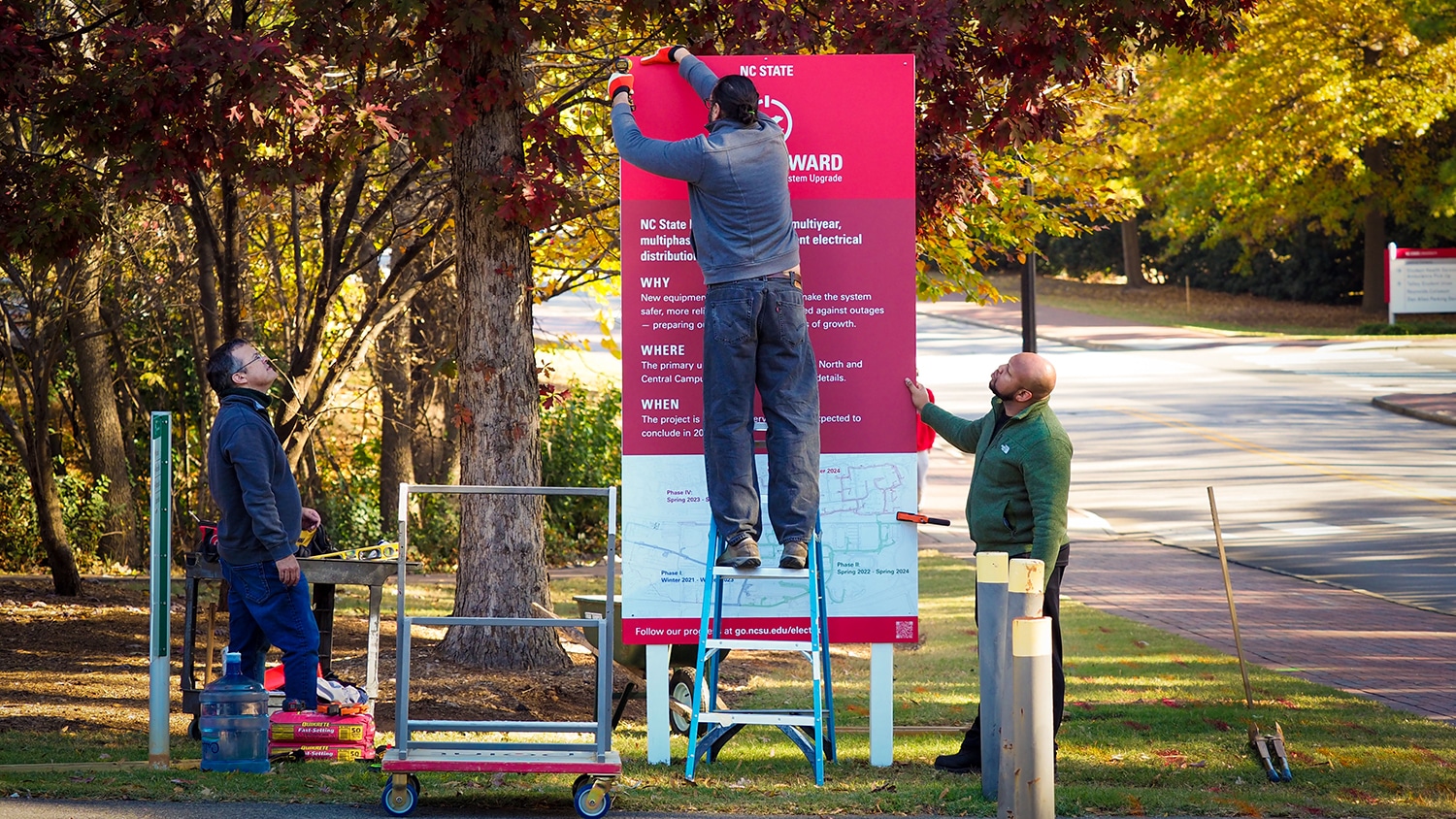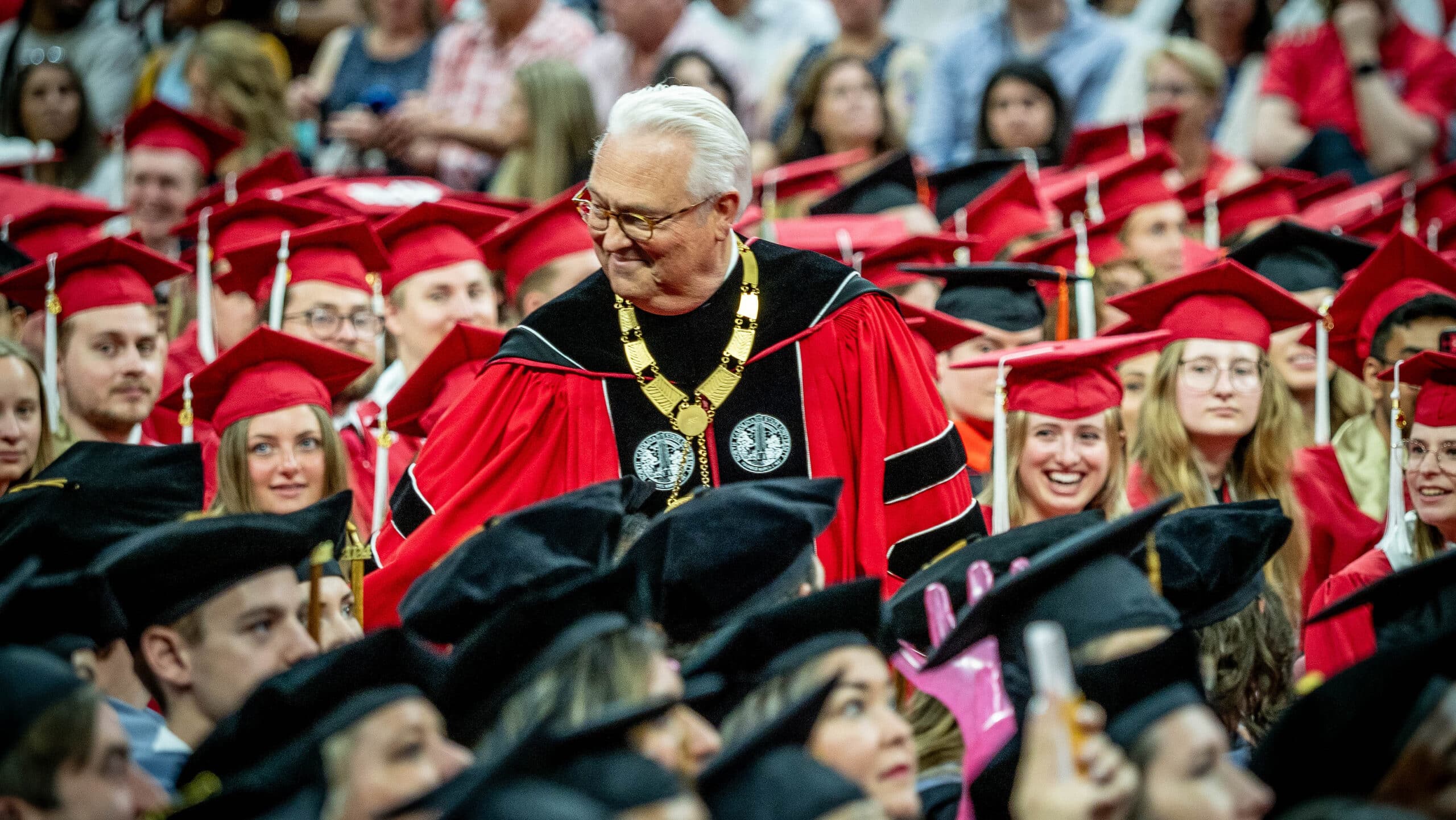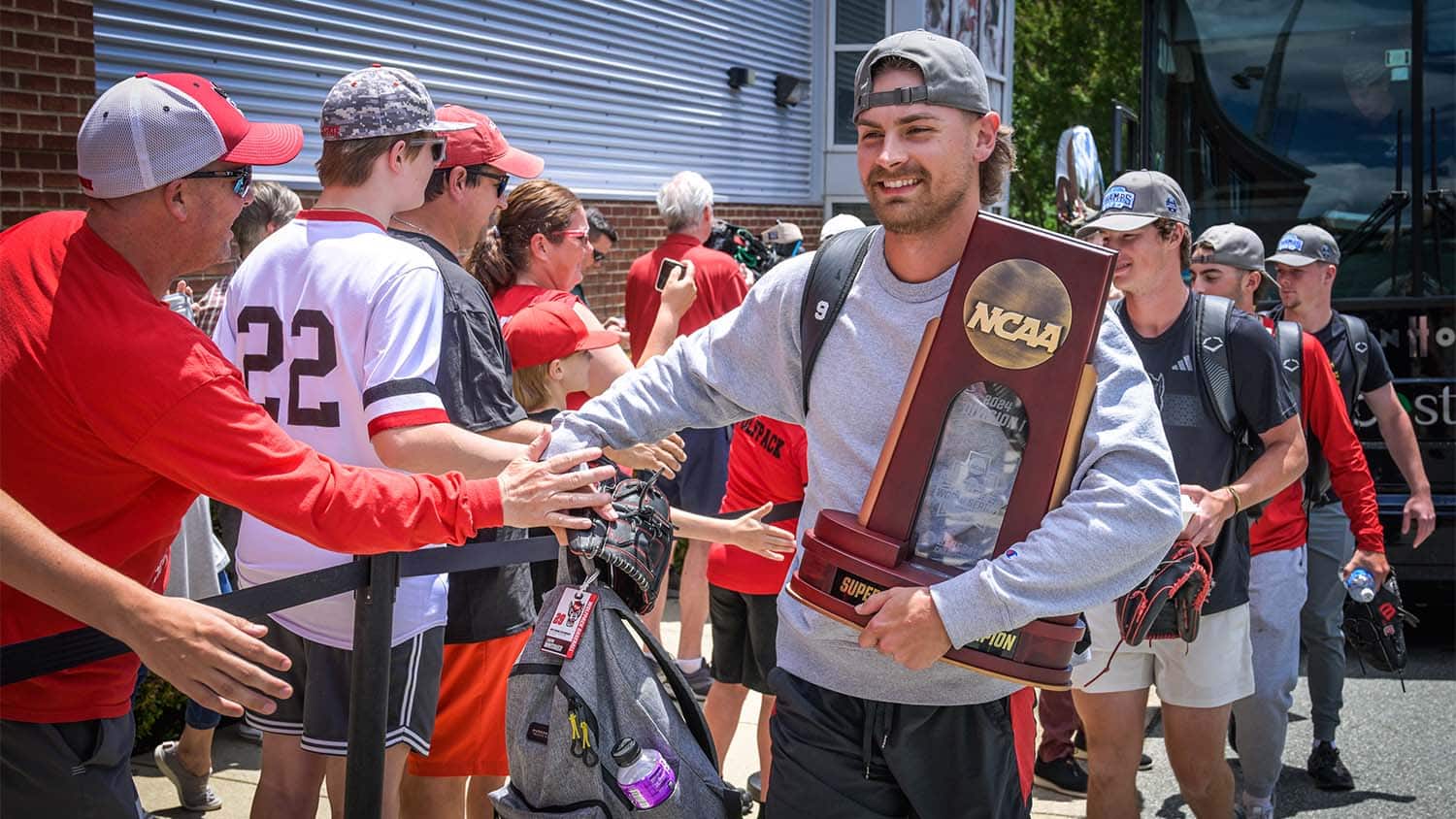Powering NC State Forward
A four-year, $60 million upgrade to NC State's electrical grid will ensure the power efficiency, reliability and stability that are key to expanding the university's growth.

Doug Morton can show any interested observer pictures of the havoc created in NC State’s electrical grid by the innumerable hungry squirrels digging around the campus for acorns and other nuts located in the heart of the City of Oaks.
It’s not for the faint-hearted.
The associate vice chancellor for the Facilities Division can also lay out the four-year, $60 million electrical distribution system upgrade called “Power Forward” to the university’s electrical grid, designed to maintain power efficiency, reliability and stability that are key to expanding the growth of a major research institution.
Replacing the current “spaghetti underground” that has evolved in more than a century of expansion and growth are all critically important to keeping the lights on and power delivered to research labs, educational buildings, resident halls and other facilities, Morton says.
And maybe even save a few squirrels along the way.
The multiphase project recently began with road closures along Sullivan Drive and will eventually reach every part of North and Central campuses.
Key to the success of the project is education and communication of the impact it will have on campus, Morton says. Signs informing the community of the upcoming work have been installed around campus and multiple communications have been sent to key partners. Details about auto-traffic detours and foot-traffic impacts will cycle through at various times during the project.
For answers to frequently asked questions, visit the Power Forward website.
“We want people to know about our website, but that is kind of passive and I am not into passive learning,” Morton says. “We have to get out and beat the bushes a bit to let people know what is going on.”
Morton has spent hours sharing the plans for the projects with key university leaders, including the Chancellor’s Cabinet, the staff, faculty and student senates, campus organizations and neighbors.
“By educating people to what’s happening, we hope to mitigate the impact to everyone,” Morton says. “I can start by telling you that we have a team of dedicated technicians who are now at work to get that done with as little disruption as possible.”
What are, then, the key components to know about a project that will surely cause some inconveniences to traffic and buildings on campus?
Safety
Replacing equipment and rerouting circuits to prevent dangerous surges within the system is a key component to improving safety, Morton says.
Most switches are now underground and utility workers often have to climb down manholes to reach and repair them. Most all connections will now be changed to above-ground switch boxes for safety reasons.
Within the last year, a maintenance worker avoided a potentially life-threatening accident while repairing an electrical problem at a residence hall that was powered by two different systems. Only one of those systems was turned off when the worker began work and he suffered an on-the-job injury that could have been much worse.
“We narrowly avoided a real tragedy,” Morton says. “What we are now beginning is going to make the system a lot safer.”
Reliability
An expanding campus over the last quarter century has put pressure on the infrastructure of the original parts of campus, Morton says, especially during storms and freezing temperatures.
Power Forward specifically targets the replacement of aging equipment with heavy-duty, thicker insulation and wiring that can handle increased loads and prevent outages during critical times.
That is essential to keep power going to labs that often rely on maintaining minus-80 degree temperatures in refrigerators, cooling equipment for expensive servers and computers, ensuring the proper working conditions of nearly 250 elevators on campus and keeping such things as emergency communications, lights and call boxes powered at all times.
“We have had some instances in which parts of campus have gone black in the last few years,” Morton says. “So it’s research, it’s instruction and it’s student activities. This is all kind of a covenant from me to the campus to make sure your building is dry and comfortable and your basic utilities will be reliable.
“That’s a big promise if we are trying to attract world-class researchers and instructors. They are not going to come if they get wind our power is not reliable.”
Self-Isolating
New, state-of-the-art technology allows the rerouting within the electric grid when a disruption occurs, cutting power at the location of the problem, but continuing it to all other necessary parts of campus.
“If a squirrel is out having lunch one day and chews through the insulation, causing a fault in the system, it will automatically shut the system down at that location and reroute it around that fault,” Morton says. “It isolates the fault in the blink of an eye and keeps power going all over campus while we make necessary repairs.”
Future Growth
Morton says the new system will provide up to 50% more electrical capacity, which will allow for more growth within the campus infrastructure.
The new electrical cables will be encased in nine-inch PVC ductwork that will handle more new lines without tearing up a street a second time to install any necessary expansion.
“We are building a system that can handle a more dense campus using the same backbone that we already have,” he says.
Morton acknowledges that a four-year construction project will cause inconveniences, as the university also begins to develop and implement a new Physical Master Plan. However, he was originally anticipating a process that would take more than twice that long.
“We are only going to grow from here,” Morton says. “I really can’t predict what our needs will be in 15 or 20 years, but what we are trying to do is predict what the power need might be and make sure we can satisfy that, not only in these cables, but in the conduits and duct banks that carry them.
“It’s been a well-thought out process, and we’re really exciting to be getting it going in what will really be a pretty compact period of time.”
- Categories:


